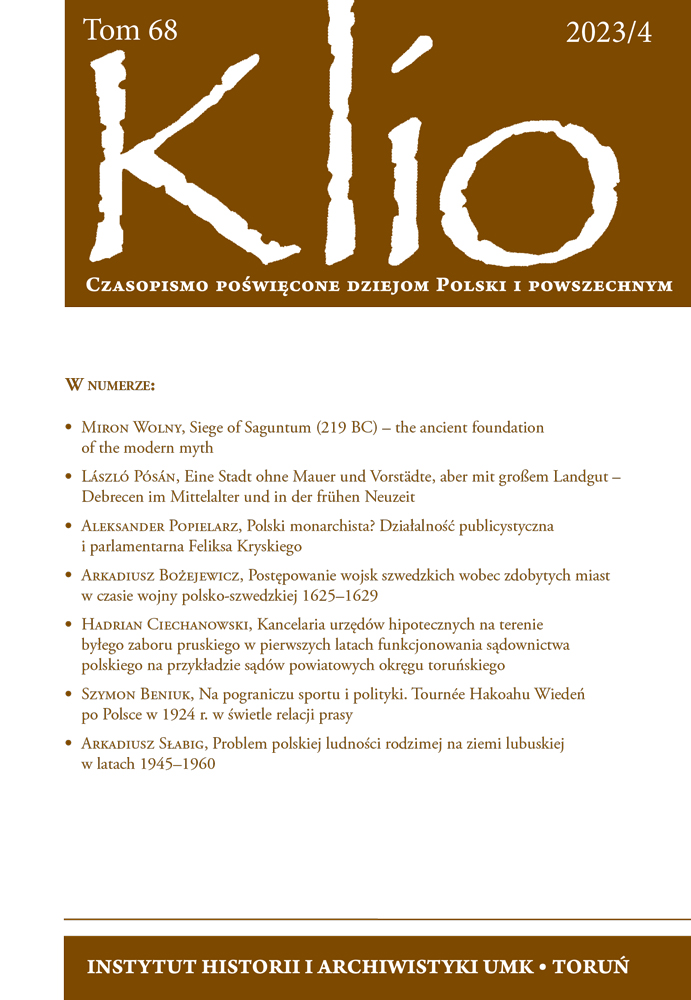Problem polskiej ludności rodzimej na ziemi lubuskiej
w latach 1945–1960
The problem of the Polish native population in the Lubusz Land in the years 1945–1960
Author(s): Arkadiusz SlabigSubject(s): Political history, Social history, WW II and following years (1940 - 1949)
Published by: Wydawnictwo Naukowe Uniwersytetu Mikołaja Kopernika
Keywords: Polish native population; Lubusz Land; Zielona Góra Voivodeship; government policy;
Summary/Abstract: The Lubusz Land, which has been part of the Zielona Góra Voivodeship since 1950, was inhabited by small groups of Polish natives, associated primarily with the so- called Babimost region and Międzyrzecz Land. Until 1945, these were areas of Germany. In the final phase of the war and just after its end, the local indigenous communities found themselves under pressure from the Soviet military authorities, the Polish administration, the security apparatus, and the settlers. The least affected were the population living in dense clusters led by former activists of the Union of Poles in Germany. Driven by a sense of responsibility for the fate of their compatriots, they joined the activities of local power structures, educational and social and cultural organizations. Along with the progressing political stabilization in Poland, the native population of the Lubusz Land was increasingly perceived by the communist authorities as proof of the eternal Polishness of the former western borderland. Efforts were made to preserve and popularize its cultural heritage, especially with regard to folk culture. The entire community of the Western and Northern Territories, built from scratch, was held up as an example by local activists under the banner of Rodło, who stubbornly fought against Germanization. Efforts were made to im- prove the difficult material situation of the indigenous population, which resulted, among others, from post-war expropriations and collectivization of agriculture. These measures, visible especially in the second half of the 1950s, were aimed at suppressing emigration sentiments. In the article, I mainly used the archival documentation collected in the State Archives in Zielona Góra, the local press from the 1950s, and the literature on the subject. I also examined the museum collections gathered in the Chamber of Remembrance in Dąbrówka Wielkopolska.
Journal: Klio. Czasopismo poświęcone dziejom Polski i powszechnym
- Issue Year: 68/2023
- Issue No: 4
- Page Range: 163-194
- Page Count: 32
- Language: Polish

